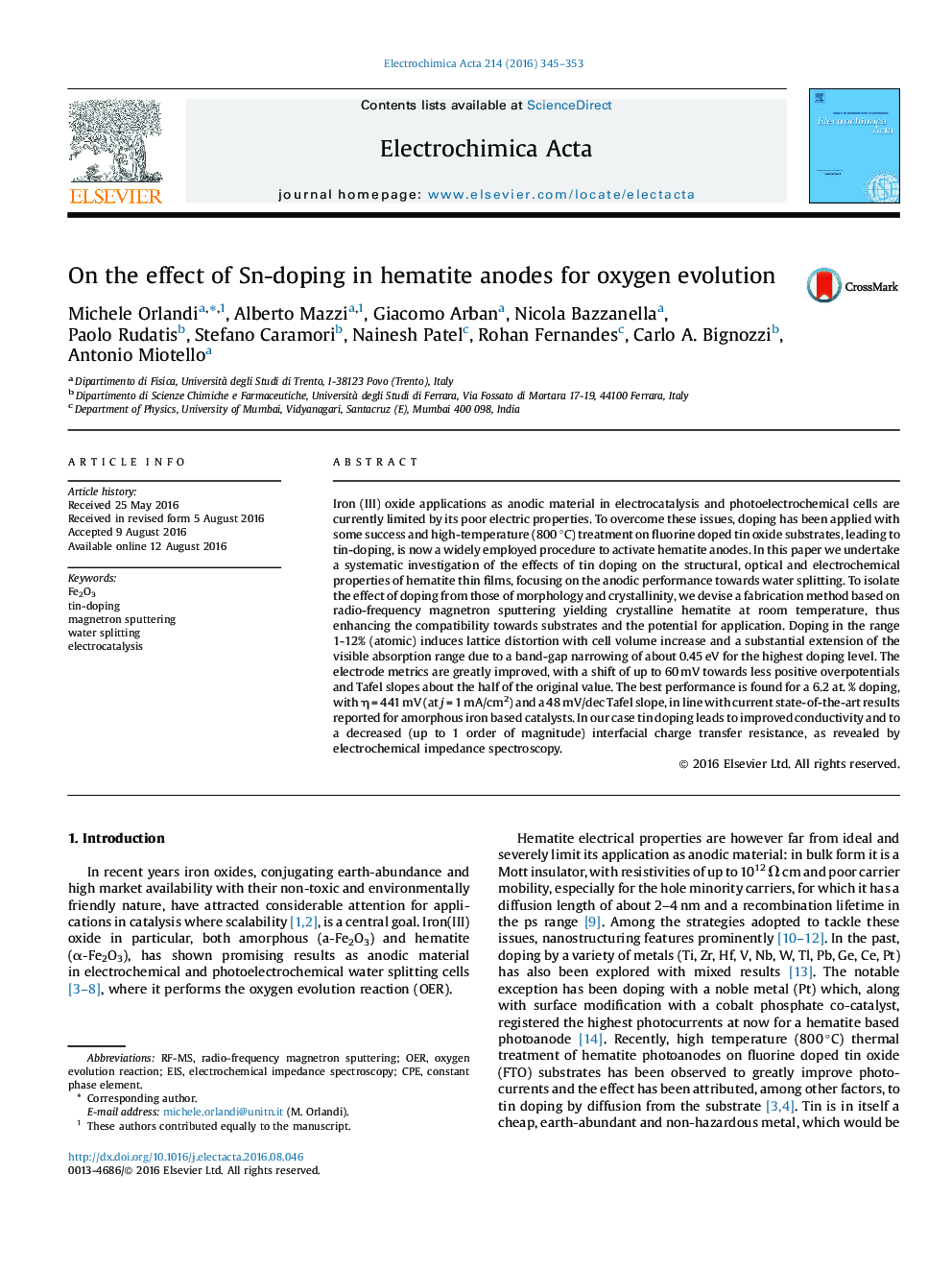| کد مقاله | کد نشریه | سال انتشار | مقاله انگلیسی | نسخه تمام متن |
|---|---|---|---|---|
| 4767735 | 1424143 | 2016 | 9 صفحه PDF | دانلود رایگان |

- The structural, optical and electrochemical effects of tin doping in hematite anodes are systematically investigated.
- Low-temperature synthesis allows to isolate the effect of tin-doping from those of structure and morphology variation.
- Optical absorption is progressively extended in the visible range due to band-gap narrowing of up to 0.45Â eV.
- Overpotentials improved of up to 60Â mV and halved Tafel slopes well explained by electrochemical impedance spectroscopy.
Iron (III) oxide applications as anodic material in electrocatalysis and photoelectrochemical cells are currently limited by its poor electric properties. To overcome these issues, doping has been applied with some success and high-temperature (800 °C) treatment on fluorine doped tin oxide substrates, leading to tin-doping, is now a widely employed procedure to activate hematite anodes. In this paper we undertake a systematic investigation of the effects of tin doping on the structural, optical and electrochemical properties of hematite thin films, focusing on the anodic performance towards water splitting. To isolate the effect of doping from those of morphology and crystallinity, we devise a fabrication method based on radio-frequency magnetron sputtering yielding crystalline hematite at room temperature, thus enhancing the compatibility towards substrates and the potential for application. Doping in the range 1-12% (atomic) induces lattice distortion with cell volume increase and a substantial extension of the visible absorption range due to a band-gap narrowing of about 0.45 eV for the highest doping level. The electrode metrics are greatly improved, with a shift of up to 60 mV towards less positive overpotentials and Tafel slopes about the half of the original value. The best performance is found for a 6.2 at. % doping, with η = 441 mV (at j = 1 mA/cm2) and a 48 mV/dec Tafel slope, in line with current state-of-the-art results reported for amorphous iron based catalysts. In our case tin doping leads to improved conductivity and to a decreased (up to 1 order of magnitude) interfacial charge transfer resistance, as revealed by electrochemical impedance spectroscopy.
127
Journal: Electrochimica Acta - Volume 214, 1 October 2016, Pages 345-353